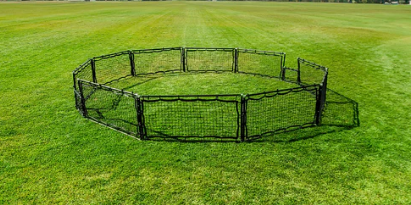Team building is a vital skill for children to develop as they navigate their way through school, social settings, and eventually, the professional world. One effective and enjoyable way to foster team building in children is through games. Games provide a structured and engaging environment where children can learn to work collaboratively, communicate effectively, problem-solve, and develop trust and respect for their teammates. This article explores the various ways games can positively impact children's team building skills and contribute to their overall personal growth.
Promoting Collaboration and Cooperation: Games encourage children to work together towards a common goal, fostering a sense of collaboration and cooperation. Whether it's a board game, a sports activity, or a team-building game, children quickly realize that success is dependent on the collective effort of the entire team. They learn to share ideas, listen to others, and pool their strengths and resources to achieve success. Through these collaborative experiences, children develop crucial skills such as compromise, negotiation, and understanding the importance of diverse perspectives.

Developing Communication Skills: Effective communication is key to successful teamwork. Games provide an avenue for children to practice and refine their communication skills. In team-based games, children must express their thoughts, convey instructions, and share feedback with their teammates. They learn to listen actively, interpret non-verbal cues, and articulate their ideas clearly. By engaging in these interactions, children become more confident and proficient communicators, enabling them to express themselves effectively and understand the viewpoints of others.
Cultivating Problem-Solving Abilities: Games often present challenges and obstacles that require problem-solving skills to overcome. By playing games, children learn to analyze situations, think critically, and develop strategies to achieve their objectives. They discover the importance of brainstorming ideas, considering different perspectives, and evaluating potential solutions. Whether it's a puzzle-solving game or a sports activity that requires strategic decision-making, children develop resilience, adaptability, and the ability to think creatively under pressure. These problem-solving experiences transfer to real-life scenarios, equipping children with the skills to navigate challenges effectively.
Instilling Leadership Qualities: Games provide opportunities for children to assume leadership roles and develop essential leadership qualities. Within a team, children may take turns being team captains, game organizers, or decision-makers. This allows them to learn how to motivate and inspire others, delegate tasks, and take responsibility for the team's performance. Through leadership experiences in games, children develop self-confidence, decision-making skills, and a sense of accountability. These qualities translate into other areas of their lives, helping them become effective leaders and contributing members of society.

Building Trust and Respecting Differences: Team building requires trust and respect among teammates. Games provide a platform where children learn to trust their peers and respect their diverse strengths, abilities, and ideas. Through cooperative gameplay, children experience the importance of trusting others to fulfill their roles and responsibilities. They also recognize the value of embracing diversity within the team and appreciating each individual's unique contributions. As they witness the positive outcomes of trust and respect in games, children are more likely to apply these principles in their relationships outside of the game context.
Encouraging Healthy Competition and Sportsmanship: Games, particularly sports-related activities, introduce children to healthy competition. They learn to compete with integrity, respecting rules and opponents. In a team setting, children experience the significance of fair play, displaying good sportsmanship, and celebrating successes graciously. They understand that winning is not the sole objective, but rather, the journey of learning, improving, and working together as a team. These lessons foster a positive competitive spirit, resilience in the face of setbacks, and the ability to appreciate and acknowledge the achievements of others.
Here is a list of games that I think would be most helpful in team building:
Blind Mice - Blind Mice is a classic children's game that involves blindfolding one or more players and challenging them to catch or tag the other players who are not blindfolded. It is a game that combines elements of strategy, agility, and sensory perception. The game typically requires a large open space, such as a playground or a backyard. One player, or a small group of players, is chosen to be the "blind mice" and is blindfolded. The remaining players become the "sighted mice" and must avoid being caught by the blindfolded players. The blindfolded players rely on their hearing, touch, and spatial awareness to locate and tag the sighted mice. They listen for footsteps, movements, and voices to identify the whereabouts of the other players. The sighted mice, on the other hand, use their agility, quick thinking, and ability to evade capture. As the blindfolded players navigate the space, they may move cautiously or try to employ strategic tactics to trap the sighted mice. The sighted mice, in turn, must utilize their agility and awareness to avoid detection and stay out of the reach of the blindfolded players. The game continues until all the sighted mice have been caught or until a predetermined time limit is reached. Once caught, a sighted mouse may join the blindfolded players, increasing the challenge for the remaining players. Blind Mice is not only a fun and engaging game for children but also offers several benefits. It promotes sensory perception, as blindfolded players rely on their other senses to navigate and locate the sighted mice. It enhances spatial awareness and coordination, as players must move in a controlled manner to avoid collisions and obstacles. The game also fosters communication and teamwork. Sighted mice may communicate through whispers or hand signals to warn each other of the blindfolded players' movements or to coordinate their evasion strategies. This teamwork promotes cooperation, trust, and effective communication among the players.
9 Square - 9 Square is a versatile and dynamic game that can greatly contribute to team building. Originally designed as a casual and recreational game, 9 Square has gained popularity in various settings, including schools, youth groups, and team-building workshops. Here are some ways in which 9 Square can aid in team building.
Collaboration and Communication: 9 Square requires players to work together to achieve a common goal. Participants must communicate effectively to strategize, anticipate each other's moves, and coordinate their actions. By engaging in collaborative play, individuals learn the importance of clear and concise communication, active listening, and effective teamwork.
Trust and Support: 9 Square encourages players to trust their teammates and rely on them for support. The game involves rapid movements and quick decision-making, which often require individuals to rely on others for assistance or pass the ball strategically. Trusting teammates fosters a sense of camaraderie and allows individuals to take risks, knowing they have the support of their team.
Problem-Solving and Adaptability: 9 Square presents unique challenges that require problem-solving skills and adaptability. Participants must analyze the current state of the game, anticipate the movements of others, and adjust their strategies accordingly. The fast-paced nature of the game encourages individuals to think on their feet, make quick decisions, and adapt to changing circumstances, promoting flexibility and agility in problem-solving.
Healthy Competition: While 9 Square is a competitive game, it emphasizes healthy competition and sportsmanship. Players are encouraged to compete with integrity, respecting the rules and demonstrating fair play. By engaging in friendly competition, individuals learn how to handle both victory and defeat graciously, fostering a positive competitive spirit within the team.

Leadership Development: 9 Square offers opportunities for individuals to take on leadership roles. Whether it's organizing strategies, making crucial decisions, or leading by example, participants can practice and develop their leadership skills. Leading a team during the game allows individuals to enhance their confidence, decision-making abilities, and ability to motivate and inspire others.
Building Relationships and Connection: 9 Square provides a fun and interactive environment for individuals to bond and build relationships. The shared experience of playing the game creates opportunities for participants to connect, learn about each other's strengths and weaknesses, and develop a sense of camaraderie. The game serves as a platform for social interaction, fostering a positive team dynamic and promoting a sense of belonging.
Fun and Engagement: Ultimately, 9 Square is an enjoyable and engaging game that promotes active participation and enthusiasm. By creating a positive and enjoyable experience, participants are more likely to feel motivated, energized, and connected with their teammates. This positive atmosphere contributes to a more effective and cohesive team-building experience.
Human Knot - The game of Human Knot is a popular team-building activity that challenges participants to work together and solve a physical problem. In this game, participants stand in a circle, extend their hands, and grab the hands of two different people across from them. The objective is to untangle the resulting human knot without letting go of each other's hands. Human Knot offers several benefits for team building.
Communication: Human Knot requires clear and effective communication among team members. Participants must communicate their intentions, coordinate their movements, and provide guidance to untangle the knot successfully. Through this game, individuals learn the importance of active listening, verbal and non-verbal communication, and the value of conveying instructions concisely.
Collaboration and Cooperation: Human Knot promotes collaboration and cooperation as participants work together to find a solution. Every individual's movement impacts the entire group, requiring everyone to cooperate and adjust their positions accordingly. The game emphasizes the significance of collective effort, teamwork, and the understanding that success is achieved through mutual support and cooperation.
Problem-Solving: Untangling the human knot presents a complex problem that requires critical thinking and problem-solving skills. Participants must analyze the current state of the knot, identify potential solutions, and strategize the most efficient ways to untangle themselves. The game encourages creative thinking, adaptability, and the ability to approach challenges from different perspectives.
Trust-Building: Human Knot fosters trust-building among team members. As participants physically rely on each other to stay connected, they develop a sense of trust and dependency. Trust is built as individuals support each other, take calculated risks, and rely on their teammates to maintain the integrity of the knot. This trust-building experience carries over into other team-building activities and real-life situations.
Problem-Solving under Pressure: Human Knot introduces a time constraint and a sense of urgency, which adds pressure to the game. Participants must work efficiently and make decisions quickly, often under time pressure. This simulates real-life scenarios where teams need to solve problems within a limited timeframe. The game helps individuals enhance their ability to think on their feet, make rapid decisions, and remain calm under pressure.
Relationship-Building: Human Knot provides a unique opportunity for participants to physically engage with each other. The physical contact and shared experience foster a sense of connection and create a bond among team members. The game helps break down barriers, encourages interaction, and promotes the development of positive relationships within the team.
Fun and Engagement: Human Knot is an enjoyable and engaging activity that adds an element of fun to team building. The game's interactive nature captures participants' attention, keeps them actively involved, and creates a positive and enjoyable atmosphere. When individuals enjoy the activity, they are more likely to be motivated, energized, and receptive to the team-building process.
Games play a significant role in team building by fostering collaboration, communication, problem-solving, trust-building, and relationship-building among participants. Engaging in team-based games requires individuals to work together towards a common goal, encouraging cooperation and mutual support. Through games, participants develop effective communication skills, actively listen to each other, and learn the importance of conveying ideas clearly. Games present challenges that require problem-solving abilities, promoting critical thinking, creativity, and adaptability. Trust is built as participants rely on each other's contributions, fostering a sense of unity and shared responsibility. Moreover, games provide opportunities for individuals to form positive relationships, break down barriers, and create a bond within the team. The element of fun and engagement in games enhances motivation and enthusiasm, creating a positive team-building experience. Overall, games provide a structured and enjoyable platform for teams to develop essential skills, strengthen relationships, and build a cohesive and productive team environment.
Another really fun game for kiddos is Gaga Ball. It's a game in a walled off area called a gaga ball pit that and the goal is to not get hit by the ball.
For more equipment and games to be used for your next skills based class, click here!







